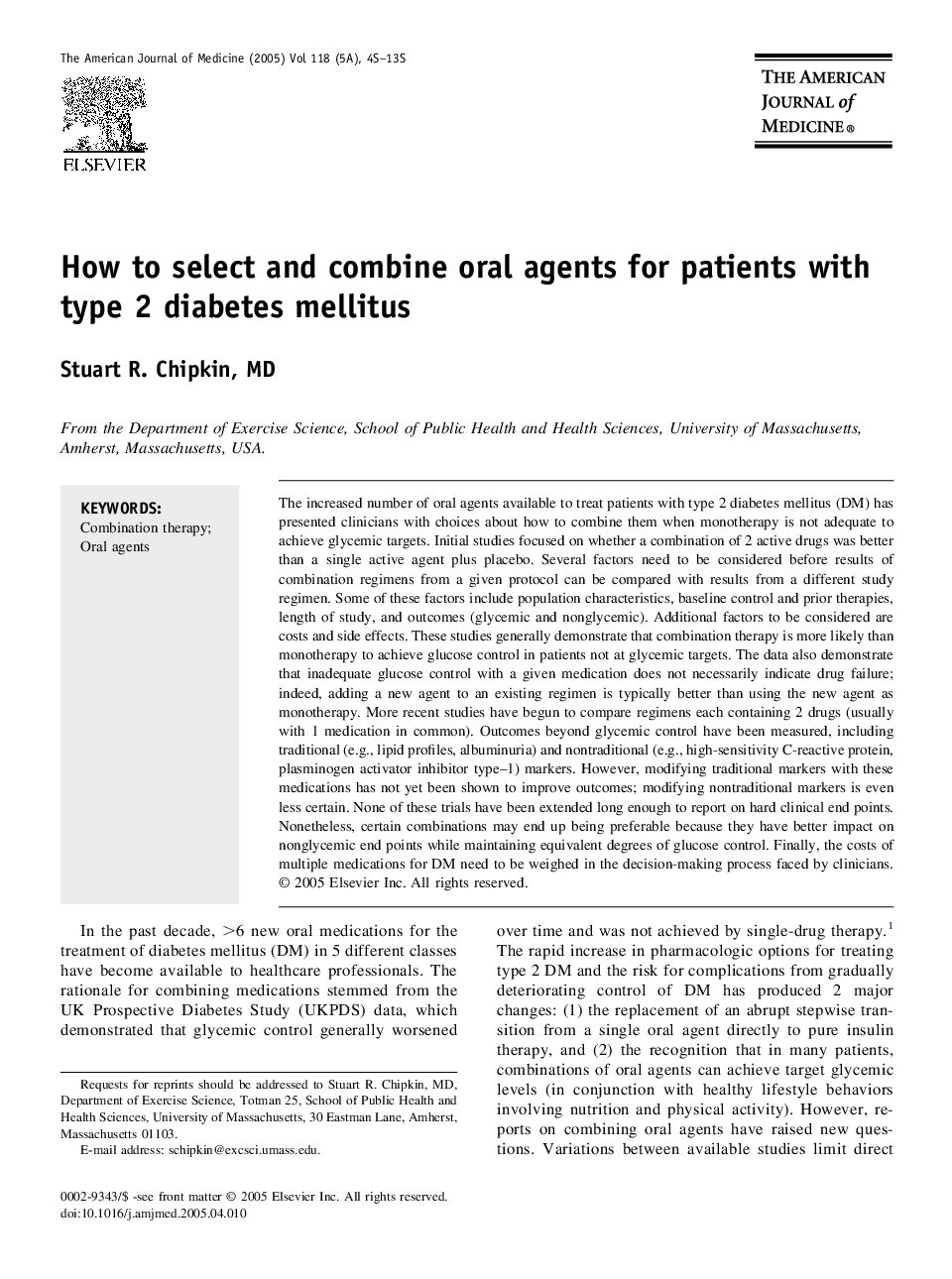| کد مقاله | کد نشریه | سال انتشار | مقاله انگلیسی | نسخه تمام متن |
|---|---|---|---|---|
| 9929501 | 1566304 | 2005 | 10 صفحه PDF | دانلود رایگان |
عنوان انگلیسی مقاله ISI
How to select and combine oral agents for patients with type 2 diabetes mellitus
دانلود مقاله + سفارش ترجمه
دانلود مقاله ISI انگلیسی
رایگان برای ایرانیان
موضوعات مرتبط
علوم پزشکی و سلامت
پزشکی و دندانپزشکی
پزشکی و دندانپزشکی (عمومی)
پیش نمایش صفحه اول مقاله

چکیده انگلیسی
The increased number of oral agents available to treat patients with type 2 diabetes mellitus (DM) has presented clinicians with choices about how to combine them when monotherapy is not adequate to achieve glycemic targets. Initial studies focused on whether a combination of 2 active drugs was better than a single active agent plus placebo. Several factors need to be considered before results of combination regimens from a given protocol can be compared with results from a different study regimen. Some of these factors include population characteristics, baseline control and prior therapies, length of study, and outcomes (glycemic and nonglycemic). Additional factors to be considered are costs and side effects. These studies generally demonstrate that combination therapy is more likely than monotherapy to achieve glucose control in patients not at glycemic targets. The data also demonstrate that inadequate glucose control with a given medication does not necessarily indicate drug failure; indeed, adding a new agent to an existing regimen is typically better than using the new agent as monotherapy. More recent studies have begun to compare regimens each containing 2 drugs (usually with 1 medication in common). Outcomes beyond glycemic control have been measured, including traditional (e.g., lipid profiles, albuminuria) and nontraditional (e.g., high-sensitivity C-reactive protein, plasminogen activator inhibitor type-1) markers. However, modifying traditional markers with these medications has not yet been shown to improve outcomes; modifying nontraditional markers is even less certain. None of these trials have been extended long enough to report on hard clinical end points. Nonetheless, certain combinations may end up being preferable because they have better impact on nonglycemic end points while maintaining equivalent degrees of glucose control. Finally, the costs of multiple medications for DM need to be weighed in the decision-making process faced by clinicians.
ناشر
Database: Elsevier - ScienceDirect (ساینس دایرکت)
Journal: The American Journal of Medicine - Volume 118, Issue 5, Supplement, May 2005, Pages 4-13
Journal: The American Journal of Medicine - Volume 118, Issue 5, Supplement, May 2005, Pages 4-13
نویسندگان
Stuart R. MD,